Following the launch of SRAM's updated Force AXS groupset, I headed off to Portugal to see how it compares to the previous iteration.
The first thing to note is I haven’t forgotten to add ‘eTap’ to its name. Electronic groupsets are now so commonplace, it seems, that SRAM feels it doesn’t need to make it obvious and has, thus, dropped the term ‘eTap’. A sad day for the mechanical groupset.
Flying out to the southern end of Europe after a long winter of cold, wet commutes is hardly the toughest gig in the world. So with the world’s smallest violin playing, off I trekked, keen to see what upgrades SRAM has brought to the table.

You may also be looking at the lead image and struggling to notice much difference between the new incarnation of Force AXS and the old one. It’s true to say when I first saw this groupset, I wasn’t immediately blown away.
After my first couple of rides using the new SRAM Force AXS groupset, it seems it's far more of an incremental update than a major change.
It improves upon a well-established, high-performing platform, but perhaps doesn’t have the wow factor I was hoping for.
That said, there are a fair few upgrades to take a look at, so let’s dive into the major changes and see what difference they make out on the road.
SRAM Force AXS shifting
Front derailleur
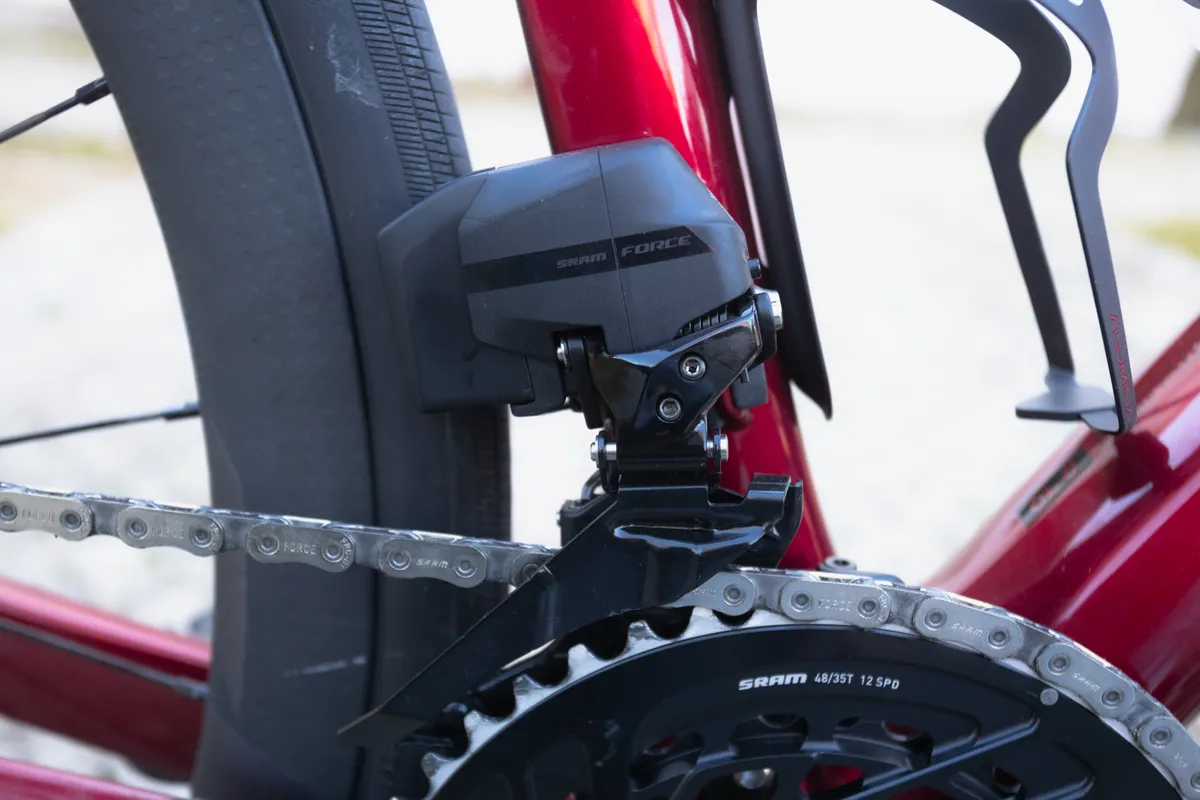
The most immediately notable improvement comes at the front derailleur.
SRAM has made small changes to the profile of the cage, moving the cage bolt around to the inner plate and adopting a more angular design where the inner and outer cages join.
It has also brought the integrated chainrings design from Red AXS down to Force level. These changes have been made in an effort to add stiffness to the shift action.
Combined, this creates a very smooth and quick shift from inner to outer ring for a notable improvement over the old groupset.
While playing around with this before my first ride was fun, I was keen to try the shifting while putting some real power through the pedals.

Once we’d started to climb, I dropped back from the group and flicked the chain into the inner ring. I’m not recommending this as best practice, but I then stood up, stamped on the pedals and asked the front derailleur to give me the big ring.
Not only did the system do this without fuss, but the shift was perfectly quiet. It’s an impressive improvement over the old SRAM Force eTap AXS groupset and will make for a very interesting test when we pit this against Shimano’s latest Ultegra Di2 R8170 groupset.
Rear derailleur
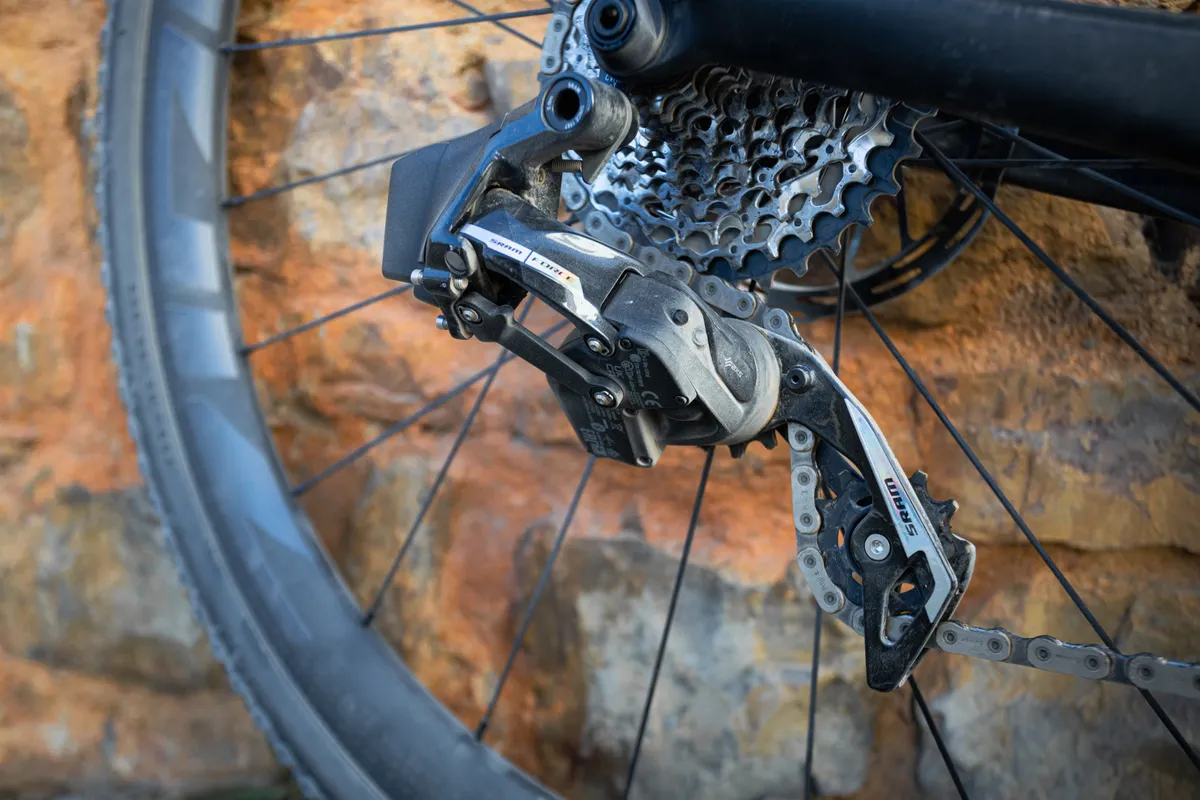
While a lot has changed in the front derailleur, any improvements to the rear shifting appear more subtle.
With the outgoing Force eTap AXS groupset, I was very aware when the chain was shifted into or out of the bailout gear at the top of the cassette. With the wider-range cassettes, it was sometimes a laboured gear change and made me really question why SRAM had designed its gear progression in this way.
The change in tooth count when shifting to the largest cog remains rather stark on the 10-33t cassette I was riding, but initial impressions suggest SRAM has smoothed this jump.
Shifting through the rest of the cassette is still crisp, quick and accurate, but the biggest improvement you’ll find back here is one you might not even notice.
In more extreme gear combinations, mostly when in the big ring and at the easier end of the cassette, you’ll find drivetrain noise has been reduced significantly.
Riding shorter climbs while cross-chaining silently might not be best practice for extending drivetrain life, but it can keep your momentum going better than dropping into the little ring, and it feels good too.
SRAM Force AXS chainrings

A new feature is the integrated chainring design, which has been filtered down from SRAM’s flagship Red AXS groupset.
The integrated, direct-mount design is claimed to improve shift quality because the system is stiffer than the four-bolt design it replaces. There's also an overall claimed weight saving of around 83g versus the previous crankset (chainrings, cranks and power meter).
The problem, however, is if you end up needing to replace a chainring – whether through wear and tear or simply because you want to use different-sized rings – you’ll need to pay out for the whole double-chainring setup.
Should you have the new Force AXS power meter on your bike, this will need to be replaced too, as the chainrings are integrated into the power meter spider and can't be separated.
In fairness to SRAM, it does have a power meter recycling programme to avoid this creating unnecessary electronic waste. Original owners of such power meters can also trade in ones with worn-out chainrings for a 10 per cent discount off a new power meter (with new chainrings).
However, this is significantly less than the 50 per cent discount on Red AXS power meter replacements and the trade-in process only covers ‘like for like’, meaning you can’t change chainring sizes. It’s therefore still likely to end up being more expensive than simply replacing one, or even both, of the chainrings individually.
SRAM justified the design by saying consumers don’t replace chainrings nearly as often as we might think. Even if this is the case, the integrated system means you lose the ability to sub in a different-sized chainring when, for example, heading for a weekend of serious climbing, or swapping a power meter over to a gravel or time trial bike.
I also would have liked a shiny chrome finish, as you get with the Red chainrings, but only because it rewards the fastidious bike cleaner.
SRAM Force AXS levers
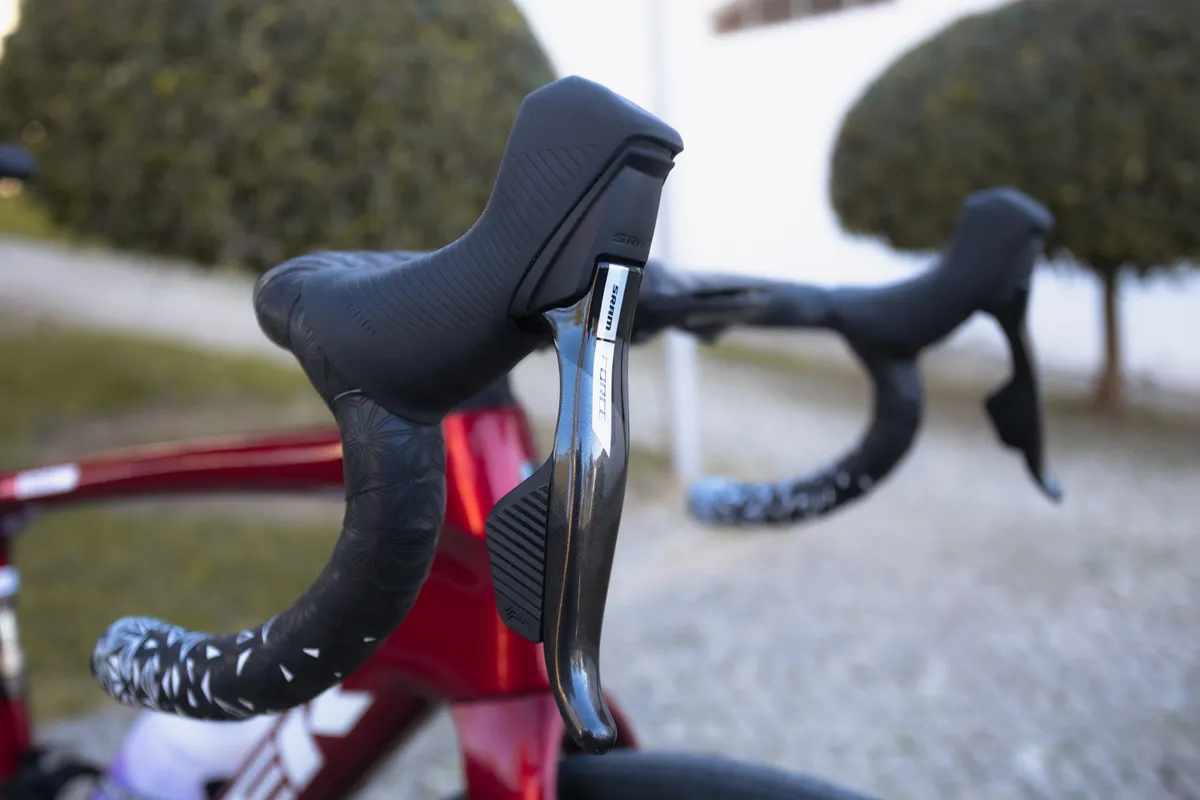
When SRAM introduced its entry-level Rival eTap AXS electronic groupset, significant changes were made to the hood ergonomics and features, such as removal of pad contact point adjustment.
As suggested by some prototypes spotted at pro cyclocross races, SRAM has now applied a similar treatment to the Force AXS shift/brake levers.
As with the Rival shifters, the auxiliary ports for the wired Blips, SRAM’s satellite shift buttons, are now gone at Force level too.
SRAM told me this has been done to allow for a smaller shifter body, and to compensate for the loss of Blips ports, you can now connect up to six AXS wireless shifters instead.
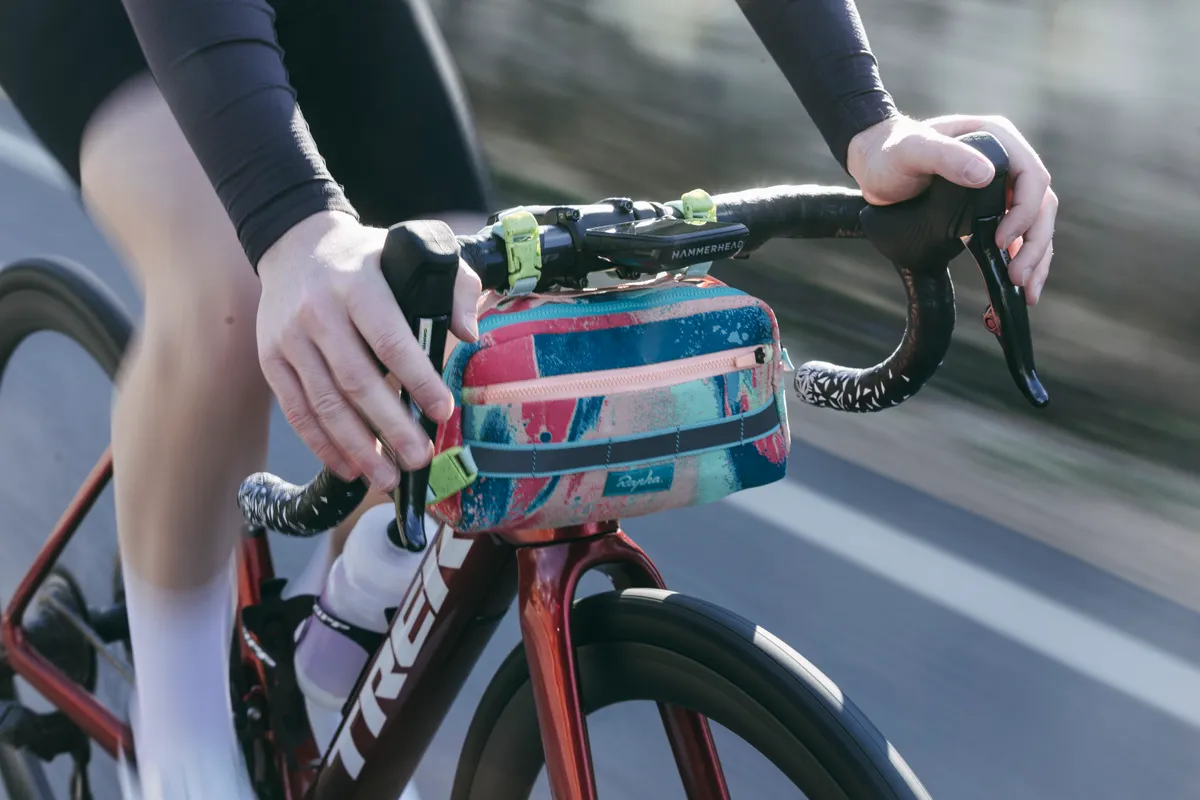
I had the wireless shifters set up on the underside of the tops of the handlebar. In this position, they worked really well, enabling quick gear changes when riding on straighter roads and gravel tracks.
SRAM says these shifters can be used on the inside of the drops, acting as a sprinter shifter.
However, I’m not a fan of using them here because the body around the button is quite large under the bar tape, which negatively affects the ergonomics of the handlebar too much for my liking.
There are also some small changes to the lever and paddle shapes, but they’re minor. It’s still very simple to use this system and the DoubleTap shifting logic is certainly the easiest of any electronic groupset to get to grips with.
The levers are carbon, helping to distinguish Force from the Rival components.
SRAM Force AXS braking
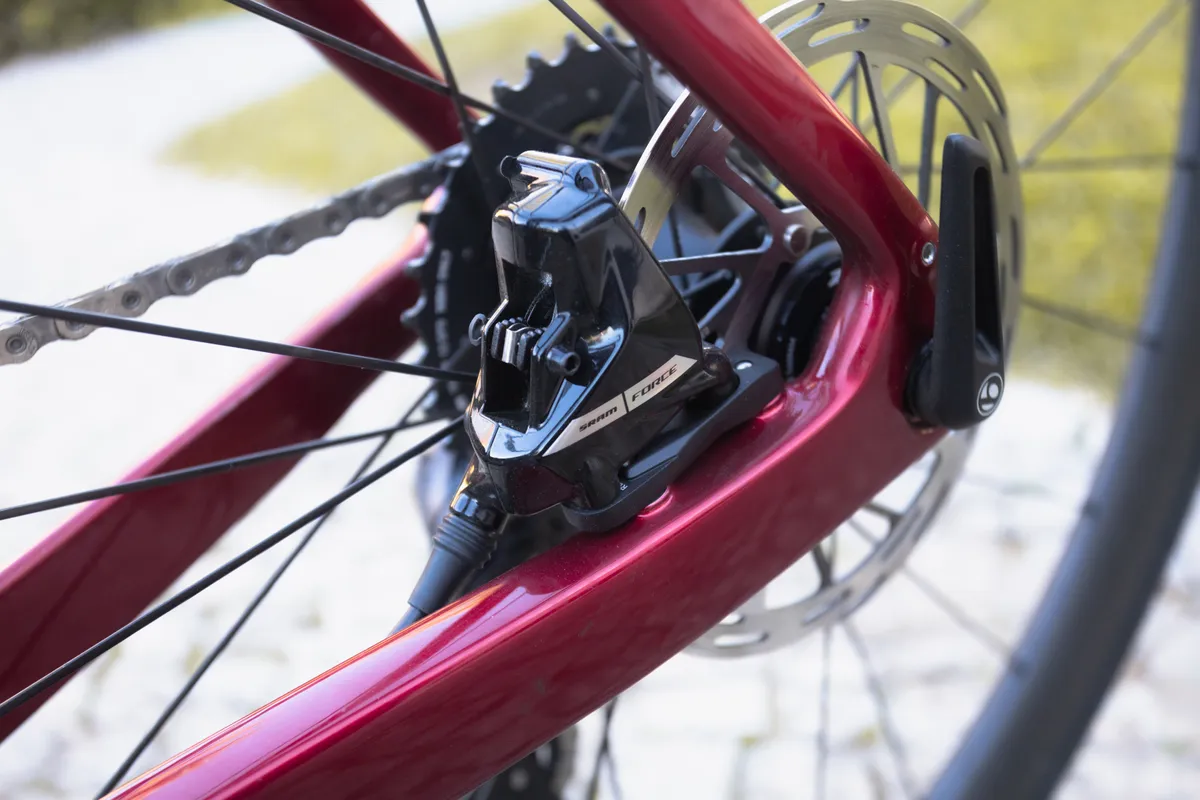
When it comes to the brakes, not a huge amount has changed in what you feel at the lever. Pulling on the brakes, the levers felt very firm in my hands and the plentiful power was easy to modulate.
SRAM says it hasn’t completely overhauled the Force brake caliper design, it has made a running change, moving to a two-piece body.
This apparently enables SRAM to more accurately machine the internal bore holes, resulting in better piston retraction. This should, in turn, lead to less brake rub following periods of prolonged heavy braking.
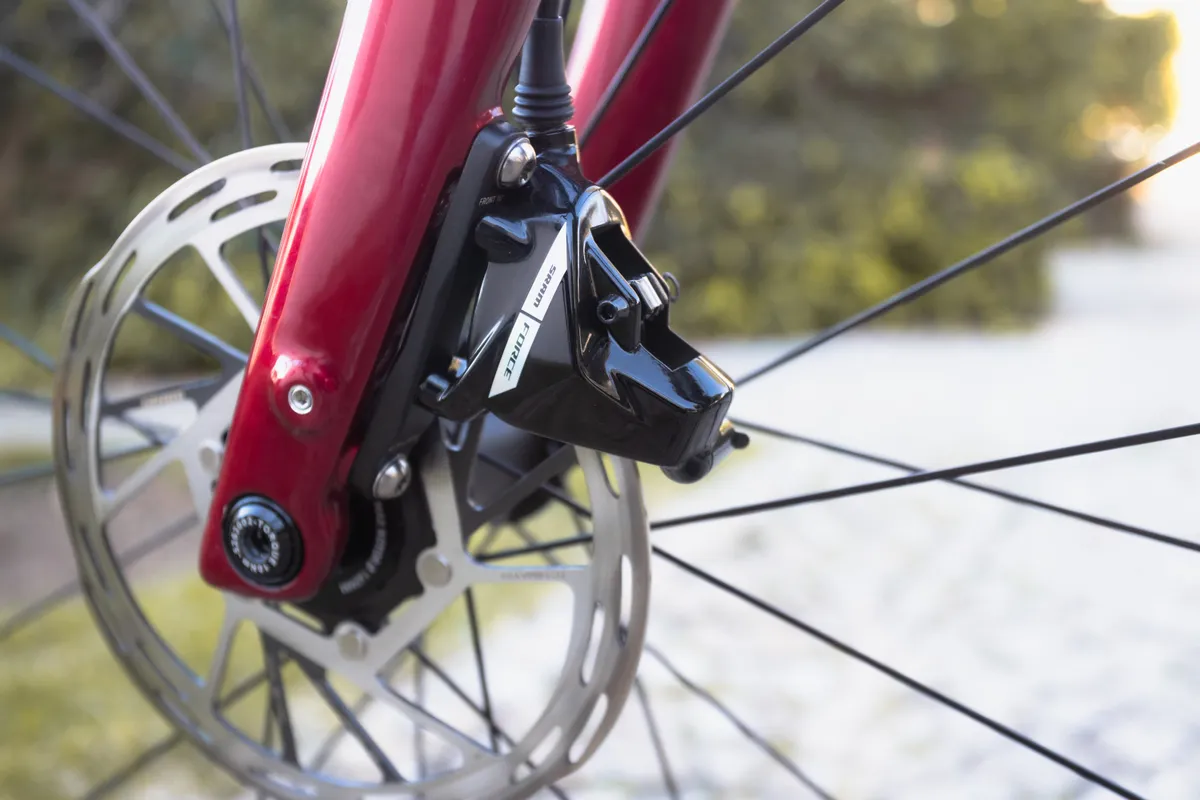
That’s the theory, but it will take a little more time to see whether this manufacturing change has any bearing on rotor rub.
I was hoping for a bit more progression through the lever travel. The old brakes felt a little 'wooden' in my hands and I was hoping to find a slightly squishier lever feel, more reminiscent of high-end rim brakes.
The short story, unfortunately, is that while still plenty powerful enough to slow you down effectively, SRAM perhaps hasn’t changed enough here to rival Shimano’s latest ServoWave-equipped brakes.
SRAM Force AXS first-ride conclusion

Two rides simply isn’t enough to fully review a road bike groupset, and without a sniff of rain in Portugal, I certainly need to treat SRAM Force AXS to some more varied testing conditions.
What I can say, however, is initial impressions are good, if a little underwhelming.
As a groupset, it improves on what was already a relatively high bar and there is a lot to love. The shifting has been improved and the braking remains dependable. I just worry there isn’t enough shiny new tech to get really excited about.
Product
| Brand | Sram |
| Price | €2478.00, £2205.00, $2701.00 |
| Weight | 2896g |
Features
| Crank options | double |
| Speed | 12 |
| Brake type | hydraulic_disc |
| Cassette options | 10-28t, 10-30t, 10-33t, 10-36t |
| Chainring options | 50/37t, 48/35t, 46/33t |
